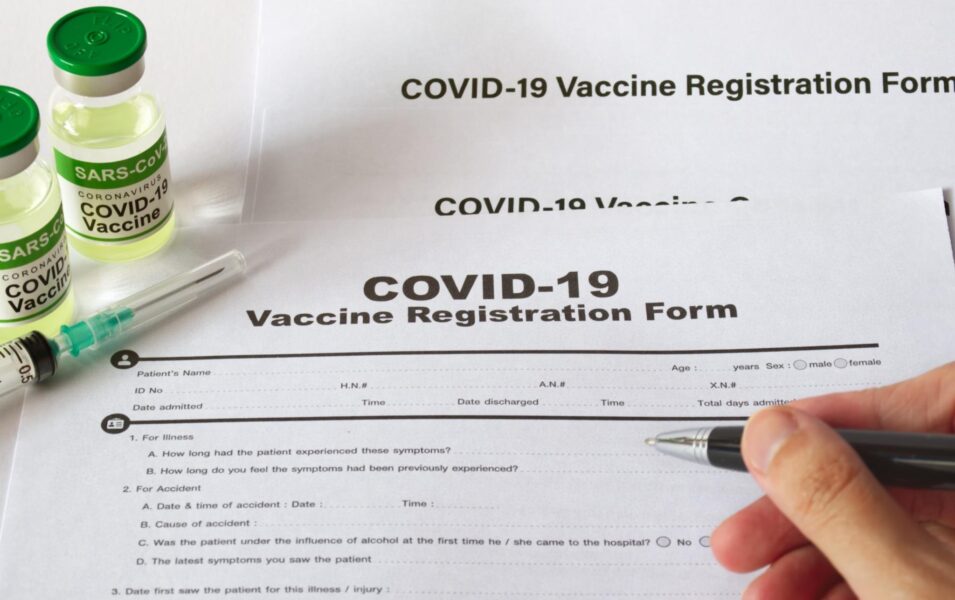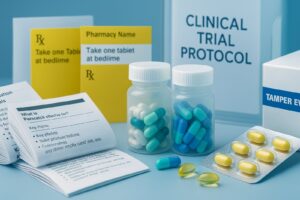How Clear Print Supports Patient Safety
In pharmaceutical print, clarity isn’t a design preference—it’s a clinical safeguard.
Every leaflet, label, and instruction card carries critical information, and if that information is unclear, hard to read, or poorly presented, the risks are real.
From dosage errors to misuse, the consequences of confusing print can be serious.
That’s why clear, patient-focused print is a quiet but essential part of protecting lives. It’s not just about ink on paper—it’s about preventing mistakes before they happen.
Companies providing printing services for pharmaceutical companies must support that goal—making information clear, accessible, and safe to use.
The Hidden Risks of Poorly Designed Patient Leaflets
Patient information leaflets (PILs) are required by law, but compliance alone isn’t enough. To be truly effective, they have to be understandable.
Unfortunately, that’s not always the case.
Common problems include:
- Tiny fonts squeezed into limited space
- Overly complex layouts with little white space
- Dense medical jargon that alienates rather than informs
A well-designed leaflet uses plain language, clear headings, and layouts that guide the reader’s eye naturally.
Good pharmaceutical print design doesn’t just follow brand guidelines—it supports comprehension. After all, a leaflet that ticks the regulatory boxes but baffles the patient has missed the point entirely.
Legible Labelling Prevents Misuse
While leaflets can be overlooked or discarded, labels are trusted—often more than any other source of information. That means the stakes are high.
A label should:
- Be printed on durable, smudge-resistant materials
- Show dosage and warnings clearly, even in poor lighting
- Remain legible through storage, handling, and transport
- Avoid cluttered design that forces users to hunt for key details
This is where print quality and layout choices matter.
Poor contrast, cramped spacing, or overly dense text can make even accurate information hard to read— especially in busy clinics, hospitals, or pharmacies where quick decisions rely on clear information.
That’s why companies providing printing services for pharmaceutical companies must go beyond compliance—delivering labels that are clear, durable, and easy to read in clinical and pharmacy settings.
And when patients or healthcare staff rely on a label for quick reference, there’s no room for ambiguity.
Bilingual Print and Patient Accessibility
In Wales, patient-facing information must be provided in both Welsh and English.
This isn’t just best practice—it’s a legal requirement under Welsh language legislation. While the medicines themselves may come in standard packaging, any supporting leaflets, labels, or materials given to patients by healthcare providers must be bilingual.
Effective bilingual print involves:
- Accurate, professionally verified Welsh translations—not word-for-word substitutions
- Clear, accessible layouts that treat both languages equally
- Consistent formatting, so patients can find what they need regardless of language
From patient information leaflets to supplementary labelling provided by NHS Wales or pharmacies, bilingual print ensures every patient receives vital information in the language they understand best, supporting both compliance and care quality.
How Fineline Ensures Patient-Focused Print
At Fineline, we know the risks of unclear communication—and the value of getting it right.
Here’s how we help reduce error and improve safety:
High-resolution print output to ensure clarity, even on small-format items
Durable materials chosen for readability, storage conditions, and long-term legibility
Layout expertise that balances regulatory requirements with real-world usability
While final proofing remains in the client’s hands, we support the process by flagging layout inconsistencies, checking file readiness, and ensuring print files are executed exactly as approved.
We offer printing services for pharmaceutical companies that focus not just on compliance, but on usability—for the patient reading the leaflet, the nurse checking the label, and the pharmacist offering guidance.
Final Thought
Patient safety doesn’t only depend on science, packaging, or regulation—it also depends on how clearly information is communicated. And much of that comes down to print.
When the message matters this much, clear print isn’t a bonus. It’s essential.
If you’d like to find out more, please get in touch here.



